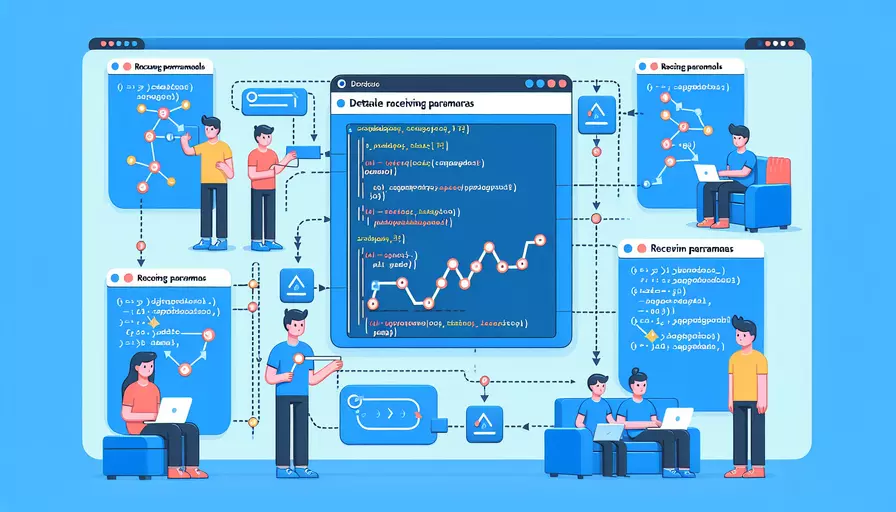
在Vue中接收传参的方式有多种,具体取决于传递参数的场景和方式。1、通过props接收父组件传递的参数,2、通过路由传参接收URL中的参数,3、通过事件传参接收子组件传递的参数,4、通过Vuex接收全局状态管理的参数。接下来,我们会详细介绍这些方法,并提供相关的代码示例和注意事项。
一、通过props接收父组件传递的参数
在Vue中,父组件可以通过props向子组件传递参数。子组件需要在props选项中声明接收的参数。
- 父组件代码示例:
<template>
<div>
<child-component :prop-name="value"></child-component>
</div>
</template>
<script>
import ChildComponent from './ChildComponent.vue';
export default {
components: {
ChildComponent
},
data() {
return {
value: 'Hello from parent'
};
}
};
</script>
- 子组件代码示例:
<template>
<div>
{{ propName }}
</div>
</template>
<script>
export default {
props: {
propName: {
type: String,
required: true
}
}
};
</script>
详细解释:
父组件通过v-bind指令绑定一个数据属性到子组件的prop上。子组件通过声明props选项来接收父组件传递的参数。这样,子组件就可以使用父组件传递过来的数据。
二、通过路由传参接收URL中的参数
Vue Router允许我们通过URL传递参数,这些参数可以在组件中通过$route对象访问。
- 路由配置示例:
const routes = [
{
path: '/user/:id',
component: UserComponent
}
];
- 组件中接收参数:
<template>
<div>
User ID: {{ userId }}
</div>
</template>
<script>
export default {
computed: {
userId() {
return this.$route.params.id;
}
}
};
</script>
详细解释:
在路由配置中,我们使用动态路径参数(如/:id)来定义路由。进入这个路由时,URL中的参数可以通过this.$route.params访问。这里,我们使用计算属性来简化对参数的访问。
三、通过事件传参接收子组件传递的参数
在Vue中,子组件可以通过自定义事件将参数传递给父组件。父组件需要在使用子组件时监听这些事件。
- 子组件代码示例:
<template>
<div>
<button @click="sendData">Send Data</button>
</div>
</template>
<script>
export default {
methods: {
sendData() {
this.$emit('data-sent', 'Hello from child');
}
}
};
</script>
- 父组件代码示例:
<template>
<div>
<child-component @data-sent="handleData"></child-component>
</div>
</template>
<script>
import ChildComponent from './ChildComponent.vue';
export default {
components: {
ChildComponent
},
methods: {
handleData(data) {
console.log(data); // Output: Hello from child
}
}
};
</script>
详细解释:
子组件通过$emit方法触发自定义事件,并传递参数。父组件在使用子组件时,通过v-on指令监听这个自定义事件,并在事件处理函数中接收传递的参数。
四、通过Vuex接收全局状态管理的参数
Vuex是Vue.js的状态管理模式。我们可以通过Vuex管理全局状态,并在任何组件中访问这些状态。
- Vuex Store示例:
import Vue from 'vue';
import Vuex from 'vuex';
Vue.use(Vuex);
export default new Vuex.Store({
state: {
message: 'Hello from Vuex'
},
getters: {
message: state => state.message
},
mutations: {
setMessage(state, newMessage) {
state.message = newMessage;
}
},
actions: {
updateMessage({ commit }, newMessage) {
commit('setMessage', newMessage);
}
}
});
- 组件中接收参数:
<template>
<div>
{{ message }}
</div>
</template>
<script>
import { mapGetters } from 'vuex';
export default {
computed: {
...mapGetters(['message'])
}
};
</script>
详细解释:
在Vuex Store中,我们定义了一个全局状态message和相应的getter、mutation和action。在组件中,我们使用mapGetters辅助函数来将Vuex的getter映射到组件的计算属性中,从而可以在模板中直接使用。
总结与建议
在Vue中接收传参有多种方式,每种方式适用于不同的场景:
- 通过props传参适用于父子组件直接通信。
- 通过路由传参适用于需要在URL中传递参数的场景。
- 通过事件传参适用于子组件向父组件传递参数的场景。
- 通过Vuex传参适用于全局状态管理的场景。
建议在实际开发中,根据具体的需求和场景选择合适的传参方式。同时,注意参数类型和必需性的声明,确保参数的正确性和健壮性。
相关问答FAQs:
1. 什么是Vue接收传参?
在Vue中,接收传参是指组件之间进行数据传递的过程。Vue提供了多种方式来接收传参,例如通过props属性、通过路由传参以及通过事件总线等方式。
2. 如何使用props属性接收传参?
在Vue中,可以通过props属性来接收传参。首先,在子组件中定义props属性,指定要接收的参数的名称和类型。然后,在父组件中使用子组件时,通过在子组件标签上添加属性,并将要传递的值赋给该属性即可。
示例代码如下:
// 子组件
<template>
<div>{{ message }}</div>
</template>
<script>
export default {
props: {
message: String
}
}
</script>
// 父组件
<template>
<child-component :message="hello"></child-component>
</template>
<script>
import ChildComponent from './ChildComponent.vue'
export default {
components: {
ChildComponent
},
data() {
return {
hello: 'Hello, Vue!'
}
}
}
</script>
在上面的示例中,子组件通过props属性接收了父组件传递的message参数,并在模板中进行了渲染。
3. 如何通过路由传参?
在Vue中,可以通过路由传参来实现组件之间的数据传递。首先,在路由配置中定义参数,然后在组件中通过$route对象来获取传递的参数。
示例代码如下:
// 路由配置
const router = new VueRouter({
routes: [
{
path: '/user/:id',
component: UserComponent
}
]
})
// 组件
<template>
<div>{{ userId }}</div>
</template>
<script>
export default {
computed: {
userId() {
return this.$route.params.id
}
}
}
</script>
在上面的示例中,定义了一个路由参数:id,然后在UserComponent组件中通过$route.params.id来获取传递的参数。
这是Vue接收传参的一些常见方式,具体使用哪种方式取决于实际的需求和场景。无论使用哪种方式,都可以实现组件之间的数据传递。
文章标题:vue如何接收传参,发布者:不及物动词,转载请注明出处:https://worktile.com/kb/p/3625836

 微信扫一扫
微信扫一扫  支付宝扫一扫
支付宝扫一扫 